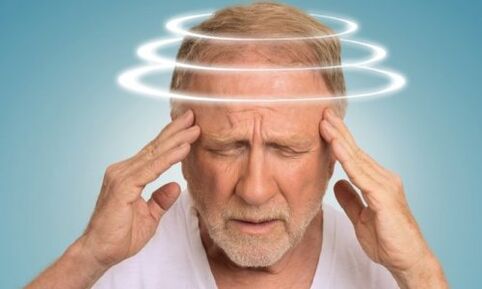Experts call the prostate the most vulnerable organ in men. The most common is inflammation of the prostate, which causes the patient a lot of discomfort. If the inflammatory process lasts longer than 3 months, we can talk about a chronic form of the disease. Every third member of the stronger sex faces the problem of how to treat chronic prostatitis. The disease can be cured, but it will require qualified medical help. You should not delay the complex treatment of chronic disease, as it causes adenoma and prostate hyperplasia, as well as reduced erectile function.

What is meant by diagnosis
Usually men are not inclined to listen to their own well-being, so the inflammatory process in the prostate takes a long time. The danger of the disease lies in the fact that it can be completely asymptomatic. Urethritis develops first, and if you do not seek medical help, complications cannot be avoided. Over time, men develop chronic prostatitis, the symptoms and treatment of which are individual. Forms of chronic prostatitis:
> zxtable border = "1" cellpadding = "0" >Many men are diagnosed with congestive chronic prostatitis (non-infectious etiology). Inflammation in this case affects the secretion of the prostate and veins.
Reasons for occurrence
The causes of chronic prostatitis are different:
- Prolonged abstinence from intimacy or overly active sex life;
- Presence of several perineal injuries (while riding or cycling);
- Irrational menu (lack of nutrients and excess fried, fatty and smoked foods);
- Recurrent genital infections;
- Decreased immunity;
- Diseases of the urogenital organs;
- Inactive and sedentary lifestyle;
- Underwear too tight and tight;
- Coitus interruptus;
- History of phimosis;
- Anal sex without additional protection (condoms).
The disease affects both older and middle-aged and even younger men:
- In inactive sex life, prostatitis occurs due to stagnation of prostate secretions.
- Athletes are at risk because they lift weights and are prone to microtraumas of prostate tissue.
- Drivers of long flights suffer from blood stagnation in the pelvic organs.
- Winter fishing enthusiasts are in danger due to constant hypothermia of the body.
Among the common male diseases, chronic prostatitis is about 20%. Every fifth patient who consults a doctor suffers from a chronic form of the disease. The disease is "rejuvenating" because modern guys are promiscuous, not thinking about their own safety. In order not to guess how to get rid of chronic prostatitis, it is enough to take care of basic protection against sexually transmitted diseases.

It is worth considering the fact that the chronic form of the disease leads to a violation of the erection of the penis and a decrease in sexual pleasure during ejaculation. Based on that, the fear of intimacy, irritability, self-doubt begins. All this further leads to sexual neurosis.
Ways of infection
Doctors notice two ways of infection with an infectious form of prostatitis:
- Urinogenic (ascending). Specific microorganisms enter the prostate through the urethra. The secretion of the prostate is normally sterile, no bacteria will be detected during the examination. There are cases when microorganisms live in the human body, but their concentration is not sufficient for the development of the disease. If the microflora is disturbed, the infection of the organs begins, which leads to the development of inflammation. Do not rule out the risk of infection and damage to neighboring organs, when a man suffers from hemorrhoids or cystitis. In this case, dangerous microorganisms enter the prostate through the lymphogenic pathway.
- Hematogenous. The causative agent of the infection enters the prostate through the bloodstream. Diseases that can cause this type of infection are different: acute flu, caries, etc. If there is a parallel venous congestion in the prostate, there is a high risk of chronic prostatitis, the treatment of which will take a long time.
Urologists identify two predisposing factors that lead to hematogenous infection:
- Congenital. Anatomical features of the prostate, including changes in muscle tissue structure or circulatory disorders.
- Acquired. Causes of chronic prostatitis are genital trauma, cravings for alcohol, long-term smoking, history of infectious diseases and frequent hypothermia.
The danger of ignoring the disease lies in the fact that at this stage the symptoms of chronic prostatitis in men are usually absent or insignificant. The patient believes that the disease can be cured with the help of folk remedies, but these methods are ineffective. The treatment regimen is prepared only by a specialist after a detailed examination and collection of the necessary information.
Warning signs
The symptoms of chronic prostatitis are different, depending on the stage of the disease and its form:
> zxtable border = "1" cellpadding = "0" >The consequences of chronic prostatitis depend on the duration of the disease:
- adenoma;
- oncology;
- Sclerosis of the prostate and bladder neck;
- Erectile dysfunction;
- infertility;
- Decreased testosterone levels.
The danger of the disease is not only in the fact that prostatitis can be confused with another disease. If the acute phase passes, the symptoms of chronic prostatitis disappear and treatment is not carried out. The man no longer cares about his health and does not go to the doctor. However, there comes a time when the signs begin to seriously interfere and interfere with normal life, but the disease has already passed into a long phase. Treatment of congestive prostatitis will take much longer if the diagnosis of the disease was not in the first phase.

Diagnosis
The symptoms of other diseases are very similar to those of chronic prostatitis. Is it possible to cure the disease without examination? It is unlikely, because only an accurate diagnosis will determine the form and stage of development of prostatitis. Discomfort can be caused by:
- tuberculosis;
- adenoma;
- Tumor.
Only a complete examination can confirm or rule out a diagnosis. There are two types of research:
- Instrumental;
- Laboratory.
After talking to the patient and taking a medical history, the urologist or andrologist will ask you to do a series of tests:
- General urine analysis;
- General blood test;
- Prostate secretion analysis;
- Blood test for PSA.
A urine sample is taken three times to obtain more precise data on the change in its composition:
- epithelial cells;
- Leukocytes;
- Pathogenic pathogens infection;
- Nonspecific bacteria.
Doctors know what chronic prostatitis is and how difficult it is to diagnose. The modern method of transrectal ultrasound (TRUS) allows you to do it precisely:
- The device with the ultrasound probe is carefully inserted into the patient's anus.
- Since the prostate is firmly attached to the wall of the rectum, the specialist has a good opportunity to study the prostate in detail and make an accurate diagnosis.
Conventional ultrasound allows you to determine the change in prostate density, its size, the presence of fibrous foci, abscesses and stones.
Before curing chronic prostatitis, the doctor must check the diagnosis once again. In case of the slightest suspicion, the patient can be referred for magnetic resonance imaging or CT to rule out the presence of a tumor focus. If a man has infravesical obstruction, an X-ray will be needed to determine the cause of the disease.
Conservative treatments

The treatment regimen for chronic prostatitis is prescribed only by a professional urologist and selected individually. The doctor considers the cause of the disease, the duration of the disease and the factor as an aggravating pathology. If congestive or infectious prostatitis is in the early stages, treatment may be with drugs:
- Antibiotic therapy. Prostatitis is curable with antibacterial drugs if a bacterial agent is detected in prostate secretions or urine. Inflammation should be pronounced. The course does not last longer than 2 months, and the cost of treatment of chronic prostatitis depends on the prescribed medication. The dosage of each drug is prescribed individually, and self-medication is fraught with complications. Reviews after treatment of prostatitis with antibiotics are not always positive, but there are reasons for that. Sometimes the symptoms last at the end of the course, even though the infection has been defeated.
- Elimination of symptoms. Pain-relieving drugs are often used to treat chronic prostatitis in men. The course of therapy may include the use of antidepressants to reduce anxiety levels.
- Alpha blockers. The course of these drugs is prescribed if the doctor has diagnosed bladder muscle hypertonia or increased intraurethral pressure. However, medications are ineffective if the patient has pelvic floor myodystrophy or impaired muscle innervation.
- hormone therapy. It is performed based on the results of hormonal examination. Androgens and antiandrogens are used.
- Vitamin therapy. With an irrational diet, the lack of nutrients is compensated due to the vitamin-mineral complex. Experts do not recommend replacing popular dietary supplements, because "dolls" will not help in any way.
- Normalization of uric acid levels. Regulator-based methods of treating chronic prostatitis are effective only in the presence of prostate stones.
- Immunostimulants. Prostatitis is treated in this way only in laboratory-proven immunodeficiency.
Answering the question whether chronic prostatitis is curable, we can say with certainty that recovery comes quickly with a properly prescribed complex.
Surgical method of treatment
Usually, the disease does not require surgical intervention, except when the complication poses a threat to the health and even the life of the patient. Modern surgery practices endoscopic interventions to reduce risk and damage health. The operation is necessary for:
- adenoma;
- Semen tubercle sclerosis;
- Prostate stones;
- Prostate sclerosis.
Effective treatment of chronic prostatitis allows you to without surgery if a man seeks medical advice in a timely manner. Do not forget that in the phase of exacerbation of the disease, surgical intervention cannot be reported. The need for such a cardinal method of treatment is determined only by the surgeon after studying the overall clinical picture.
Other treatments
Men are often worried about whether chronic prostatitis can be cured without medication. The doctor may indeed prescribe other methods:
- Massage. Do not forget about the contraindications and the fact that only a small area of the prostate is available for massage. If there are hyperplastic changes in the prostate, a course of massage can lead to acute urinary retention. This in turn causes further spread of inflammation and development of sepsis. Massage is also prohibited for venous congestion, prostate cysts and prostate stones. If you need to get rid of stale secretions, it is better to rid the prostate naturally by ejaculation.
- Special gymnastics. It is used to strengthen the bladder and prolong the interval between urination. Improving the tone of the sphincter and bladder allows you to set a break between urges to the toilet for up to 5 hours. Gymnastics is ineffective for neurodystrophic changes and myofascial syndrome.
- Muscle stimulation. Magnetic therapy, phonophoresis, transrectal ultrasound or electrical stimulation are used to reduce the tone of the pelvic floor muscles.
- Instillation. It is practically not used in modern medicine, because the infusion of drugs in the urethra is accompanied by pain and does not cure prostatitis. The consequences of such treatment can be catastrophic.
It is better to ask an andrologist or urologist about how to treat congestive prostatitis with folk remedies. Popular videos on the Internet are full of videos about the qualitative use of alcoholic tinctures and pumpkin seeds, but no method can replace drug therapy. How much the disease is treated is also determined only by the doctor, and not by the heroes on YouTube.
Useful exercises
A simple set of exercises will improve blood microcirculation in the pelvic area. They can be performed in the morning instead of the usual exercise:
- Fix your legs shoulder-width apart, raise your arms up and connect them to the back of your head. Inhale - slowly sit down and spread your knees to the side, exhale - return to starting position.
- Put your legs together, arms down freely along your body. Bend your left leg at the knee, lifting it as high as possible. Repeat with the right foot. Make 10 approaches.
- Squat, palms down. Inhale - slowly get up, spread your arms to the side. Exhale - return to starting position.
- Lie on your stomach, after you put a small ball under it (no bigger than a tennis ball). Focus on the floor and roll the ball with your stomach on the floor. Run 7 approaches.
- Lie on your back, bending your knees. Squeeze the ball between them. Inhale - squeeze your knees, exhale - relax. Do 3 sets, eventually increasing the number of repetitions to 9 times.
- Sit on the floor, focusing on your arms. Put the ball under your butt. Try rolling it on the floor with your buttocks and genitals.
Help in the fight against diseases and Kegel exercises, which are useful not only for women, but also for men.
Probable forecasts
Instead of looking for information on how to live with chronic prostatitis, it is more useful to make an appointment with a specialist. With timely access to a doctor and reasonably chosen therapy, you can improve your health. The question of whether chronic prostatitis can be completely cured cannot be answered unequivocally. It all depends on what methods the doctor has prescribed and how exactly the patient follows his recommendations.
Experts are very careful in predicting the further course of the disease. Is chronic prostatitis treated with a guarantee? Complete recovery has been reported only in rare cases, as most often the disease goes in the form of prolonged remission. Normalization of urine and blood parameters is noticed, the symptoms completely disappear. However, without following the advice of a doctor, the disease can again cause discomfort and complications.



























